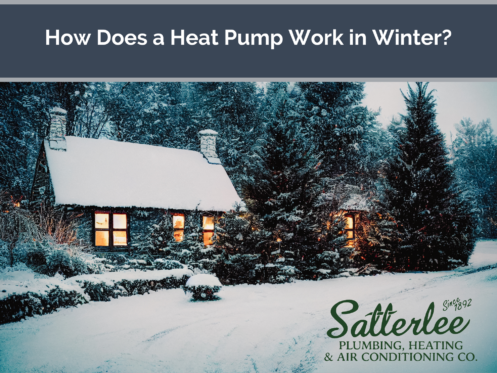Rather than burning fuel to create heat, heat pumps simply transfers heat from the outside air into the home. So how does a heat pump work in winter? Even during winter, there is enough atmospheric heat for the heat pump to redistribute inside. The energy required for transferring heat already present is considerably less than energy needed to create heat. Due to this unique process of transferring heat instead of creating it, heat pumps are remarkably efficient with energy usage. Furthermore, modern advancements allow heat pumps to handle any winter woes even while using less electricity than standard heating systems.
Do Heat Pumps Work in Cold Weather?
Originally, heat pumps got a bad reputation for being unable to perform efficiently when temperatures dropped below a specific point. This led to heat pumps becoming popular only in moderate climates. Over the years, engineers have worked to remove the greatest weakness of heat pump systems. Now thanks to these improvements, heat pumps are able to work effectively in temperatures below freezing.
Modern Upgrades to Heat Pump Components
There are several advancements within hvac technology that show dramatic improvements to heating efficiency. Heat pumps themselves still operate in the same way, but their performance capabilities are far better due to better components. Modern developments are creating high-performance heat pumps that are built to handle even Alaska’s cold climate! The major component upgrades are:
- New Compressors: As temperatures and heating needs change, these compressors can adjust their speed and energy consumption automatically
- Altered Coil Designs: Coil improvements creates more surface area to exchange heat with greater efficiency
- Adaptable Fans: Variable-speed fans adjust their energy usage to meet heating demands as needed
- Refined Motors: Built to handle the stress of winter conditions while consuming less energy than other heating systems
Backup Heat for Heat Pump
While it’s rare, there can be occasions when temperatures become cold enough to shut down heat pumps with high-performance capabilities. This is when the backup heating system will take over and ensure your house stays warm. Once temperatures rise enough, the heat pump will become operational again. There are two types of backup heating systems: electric resistance heating or gas heating. Keep in mind that a heat pump typically only uses it’s backup heating system a few days a year. So the type of backup heat for heat pump isn’t as critically important.
Furthermore, when temperatures are cold enough for the backup heating system to kick in, there is also a threat of frost. All heat pumps have a defrost process that is triggered when the sensor detects frost accumulation. However, this preventative method can fail so it’s important to watch for accumulating frost on the heat pump.
Heat Pump Pros and Cons
Heat Pumps offer several specific benefits such as:
- Better Energy Efficiency
- No Threat of Gas / Carbon Monoxide Leak
- Uses Electricity to Transfer Heat Instead of Burning Fuel
- Works With or Without Ductwork
- Runs Quietly Without Unusual Odors
Keep in mind there are some drawbacks when using a heat pump such as:
- Higher Installation Cost (Be sure to look for any rebates for your system)
- Uses More Electricity as it doesn’t Burn Other Types of Fuel
- Needs Backup Generator to Produce Heat During Power Outages
- Can Loose Efficiency in Colder Climates
Installing a Heat Pump with Satterlee
Due to the way a heat pump operates, it can be confusing to think about just how does a heat pump work in winter? Thankfully with all the technological advancements during the recent years, heat pumps are perfect for handling colder temperatures. High-performance heat pumps are just as productive and efficient at temperatures below zero just as they are at 40 degrees. You’ll enjoy comfortable temperatures even during wild temperature swings of midwest winters without worrying about swings in your monthly bills. If you’re looking for a heating system with precise room-by-room temperature control, contact us at Satterlee! Our professional technicians will ensure your heating system is properly sized and capable of handling your home’s needs.


